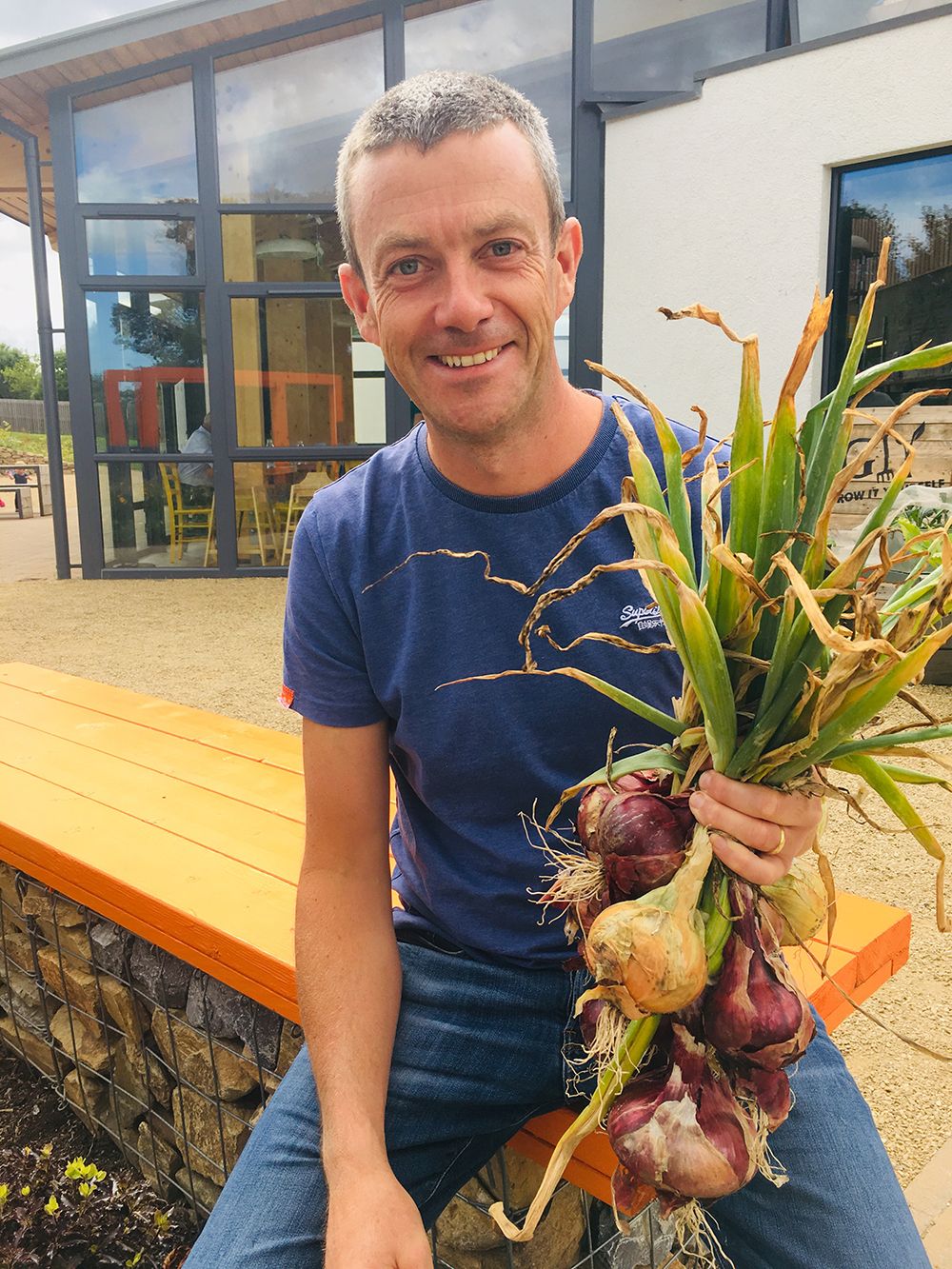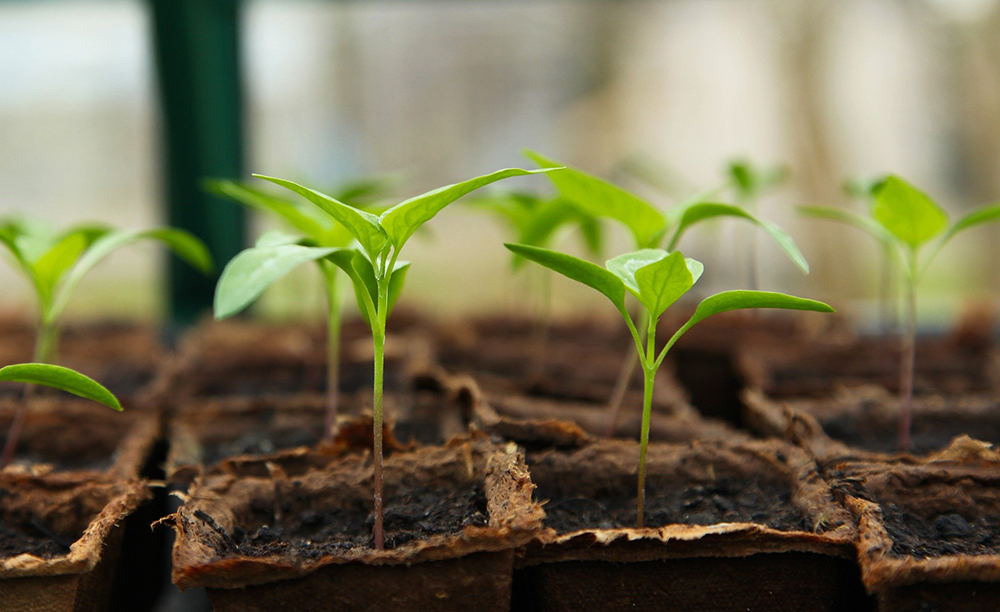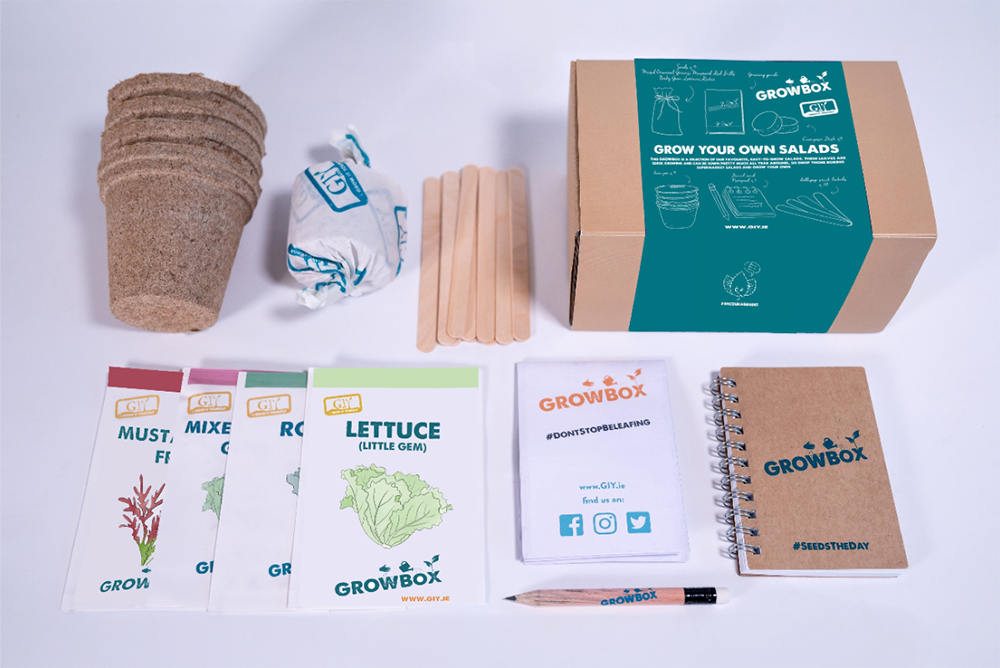Grow It Yourself - October
Grow-It-Yourself guru Michael Kelly reminds us that, as well as doing the final harvesting and tidying up, we can start planting new crops this month. And it’s time to fall back in love again with old winter reliables such as chard and spinach. They will shortly become our very best friends.
 October is really the month for harvesting and gathering all that remains in your plot so it seems strange that you can sow or plant new crops. But there are a couple of vegetables that seem to prefer a cold start and usually perform much better if sown in October, so let’s take a look at what you can sow, along with other jobs we should be doing for this spooky season.
October is really the month for harvesting and gathering all that remains in your plot so it seems strange that you can sow or plant new crops. But there are a couple of vegetables that seem to prefer a cold start and usually perform much better if sown in October, so let’s take a look at what you can sow, along with other jobs we should be doing for this spooky season.
Pot up herbs so that they can be grown inside for use during winter. Continue to lift crops that have finished harvesting and clean up the beds. By now, green manures sown in late summer will be ready to be dug in to the soil. You can also sow over-wintering green manures now. Try and find a good source of farmyard manure if you don't have your own – cow, horse, pig, sheep and chicken manure are all great sources of nitrogen, phosphorus and potassium. If you are going to cover empty beds down with manure for the winter, the earlier you do it the better. October or early November is ideal.
To Do List
• Pull up crops which have finished harvesting and compost.
• Plant fruit trees and bushes.
• Tidy away canes and supports that you used for your peas, beans etc and you should be able to use them next year.( Leave them in the ground or throw them in a corner, and you probably won't.)
• If you have a pond, stretch a piece of netting over it to keep leaves out.
• Start collecting leaves for leaf mould.
• Start storing vegetables like carrots and beets – only store the perfect specimens. Try and process the rest.
• Check apples regularly to see if they are ripe – early ripening apples generally don't store that well.
• Cut autumn fruiting raspberry canes down to the ground.
 Sowing Seeds & Planting Out
Sowing Seeds & Planting Out
You can sow hardy varieties of peas and broad beans later this month for an early spring crop but only do so in well-drained soil. In the polytunnel get a crop of cauliflower and carrots going over the winter. Plant selected varieties of garlic and winter onion sets (visit GIY online shop for varieties). The former will benefit from a good frost so it's traditional to plant before Christmas.
Harvesting
Depending on the weather, the harvest may continue well into October – it's also a month when you are still harvesting many of the great autumn fruit and vegetables – pumpkins, squashes, courgette, apples, pears etc. It's the last hurrah however for peas, French and runner beans, tomatoes, cucumbers, aubergines, peppers and chilli-peppers. Continue to harvest wild mushrooms, elderberry, blackberries, apples, sloes, pears, peas, French and runner beans, tomatoes, cucumbers, aubergines, peppers, chilli-peppers, carrots, parsnips, swedes, celeriac, turnip, beetroot, potatoes, celery, marrows, pumpkins, squash, leeks, cabbage. Root crops like carrots, parsnips, swedes, celeriac, turnips and beetroots, as well as main crop potatoes should still be thriving. You can leave these in the ground for another while yet and use them as you need them, or lift and store if you prefer. Start to fall back in love again with old winter reliables such as chard and spinach. They will shortly become your very best friends.
 New GROWBox Alert - Grow Your Own Salads
New GROWBox Alert - Grow Your Own Salads
Salad leaves are one of the quickest and easiest crops to grow, ideal for sowing in pots & window-boxes. Harvesting the young leaves when you need them prevents plants from maturing and ensures several harvests of small, tender, mild-flavoured leaves over a long period of time.
Seeds
• Mixed Oriental Greens
• Mustard Red Frills
• Baby Gem Lettuce
• Wild Rocket
• Pencil and Notepad – always a good plan to jot down your sowing dates, progress and good intentions.
• Plant Labels – no, you won't remember what's in each pot! Always label them.
• 8cm pots x 4 – for sowing some of your seeds into.
• Compost discs x 4 – one for each pot (they bulk out when you add water).
Shop GROWBox
Prepare a Crop Rotation
Crop rotation is a fancy term for grouping similar vegetables together and moving them around each year to prevent a build-up of pests/disease and to maximise soil fertility. The groupings generally have the same or similar nutrient requirements and keeping them together means that you can more easily provide them with the best growing conditions – for example, the brassica family (cabbage, kale etc.) prefer a slightly alkaline soil and you can therefore put lime in the bed where they are to be planted to reduce acidity. You can divide your vegetable patch into areas and move the veg families around to different areas. Or, if you grow in raised beds you can allocate a raised bed (or several raised beds) to each family. Draw a plan of your beds and write down where you planted things so that you can refer to it the following year. No, you won't remember!
Join our GIYers Facebook Group
For more growing advice we have set up a GIYers Facebook group as a place where all our GIYers can come together to share their growing tips, tricks, and troubles.
In this group feel free to:
• Answer questions posted
• Share your own growing journey & progress
• Post any tips & tricks you've learned
• Ask your own questions if you're having trouble (it happens to the best of us).
This group will also feature:
• Exclusive GIY resources
• Q&As
• VOUCHERS
• Gift the gift of a GROW HQ experience - our gift card can be used in our award-winning cafe, for any of our courses, and our retail shop.
SEEDS
• We use only trusted Irish suppliers and select varieties known for their reliability, yield and taste.





There are currently no comments
Leave a comment
Not a member? Register for your free membership now!
Or leave a comment by logging in with: